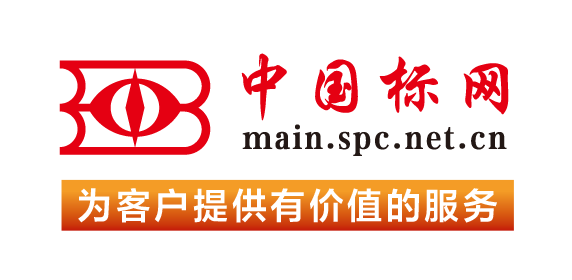【国外标准】 Standard Test Method for Determining the Activity of Incorporated Antimicrobial Agent(s) In Polymeric or Hydrophobic Materials
本网站 发布时间:
2024-02-28
开通会员免费在线看70000余条国内标准,赠送文本下载次数,单本最低仅合13.3元!还可享标准出版进度查询、定制跟踪推送、标准查新等超多特权!
查看详情>>
适用范围:
5.1 This method can be used to evaluate effectiveness of incorporated/bound antimicrobials in hydrophobic materials such as plastics, epoxy resins, as well as other hard surfaces.5.2 The aqueous based bacterial inoculum remains in close, uniform contact in a “pseudo-biofilm” state with the treated material. The percent reduction in the surviving populations of challenge bacterial cells at 24 h versus those recovered from a non-treated control is determined.5.3 The hydrophobic substrate may be repeatedly tested over time for assessment of persistent antimicrobial activity.1.1 This test method is designed to evaluate (quantitatively) the antimicrobial effectiveness of agents incorporated or bound into or onto mainly flat (two dimensional) hydrophobic or polymeric surfaces. The method focuses primarily on assessing antibacterial activity; however, other microorganisms such as yeast and fungal conidia may be tested using this method.1.2 The vehicle for the inoculum is an agar slurry which reduces the surface tension of the saline inoculum carrier and allows formation of a “pseudo-biofilm,” providing more even contact of the inoculum with the test surface.NOTE 1: This test method facilitates the testing of hydrophobic surfaces by utilizing cells held in an agar slurry matrix. This test method, as written, is inappropriate to determine efficacy against biofilm cells, which are different both genetically and metabolically than planktonic cells used in this test.1.3 This method can confirm the presence of antimicrobial activity in plastics or hydrophobic surfaces and allows determination of quantitative differences in antimicrobial activity between untreated plastics or polymers and those with bound or incorporated low water-soluble antimicrobial agents. Comparisons between the numbers of survivors on preservative-treated and control hydrophobic surfaces may also be made.1.4 The procedure also permits determination of “shelf-life” or long term durability of an antimicrobial treatment which may be achieved through testing both non-washed and washed samples over a time span.1.5 Knowledge of microbiological techniques is required for these procedures.1.6 The values stated in SI units are to be regarded as standard. No other units of measurement are included in this standard.1.7 This standard does not purport to address all of the safety concerns, if any, associated with its use. It is the responsibility of the user of this standard to establish appropriate safety, health, and environmental practices and determine the applicability of regulatory limitations prior to use.1.8 This international standard was developed in accordance with internationally recognized principles on standardization established in the Decision on Principles for the Development of International Standards, Guides and Recommendations issued by the World Trade Organization Technical Barriers to Trade (TBT) Committee.
标准号:
ASTM E2180-18
标准名称:
Standard Test Method for Determining the Activity of Incorporated Antimicrobial Agent(s) In Polymeric or Hydrophobic Materials
英文名称:
Standard Test Method for Determining the Activity of Incorporated Antimicrobial Agent(s) In Polymeric or Hydrophobic Materials标准状态:
Active-
发布日期:
-
实施日期:
出版语种:
- 其它标准
- 上一篇: ASTM E2176-08 Standard Test Method for Measuring the Coefficient of Retroreflected Luminance of Pavement Markings in a Standard Condition of Continuous Wetting (RL-Rain) (Withdrawn 2013)
- 下一篇: ASTM E2215-19 Standard Practice for Evaluation of Surveillance Capsules from Light-Water Moderated Nuclear Power Reactor Vessels
- 推荐标准
- ASTM 51401-21 Standard Practice for Use of a Dichromate Dosimetry System
- ASTM 51956-21 Standard Practice for Use of a Thermoluminescence-Dosimetry System (TLD System) for Radiation Processing
- ASTM A1010/A1010M-24 Standard Specification for Higher-Strength Martensitic Stainless Steel Plate, Sheet, and Strip
- ASTM A1016/A1016M-24 Standard Specification for General Requirements for Ferritic Alloy Steel, Austenitic Alloy Steel, and Stainless Steel Tubes
- ASTM A105/A105M-24 Standard Specification for Carbon Steel Forgings for Piping Applications
- ASTM A1064/A1064M-24 Standard Specification for Carbon-Steel Wire and Welded Wire Reinforcement, Plain and Deformed, for Concrete
- ASTM A108-24 Standard Specification for Steel Bar, Carbon and Alloy, Cold-Finished
- ASTM A1080/A1080M-24 Standard Practice for Hot Isostatic Pressing of Steel, Stainless Steel, and Related Alloy Castings
- ASTM A1090/A1090M-19(2024) Standard Specification for Forged Rings and Hollows for Use as Base Plates in Power Transmission Structures
- ASTM A1115/A1115M-24 Standard Practice for Construction of Mechanically Stabilized Earth Walls with Inextensible Soil Reinforcement
- ASTM A1128-24 Standard Specification for Stainless Steel Shielded, Rubber Gasketed Couplings Having an Integral Restraint Feature for Joining Hubless Cast Iron Soil Pipes and Fittings Where External Restraint Is Required
- ASTM A179/A179M-24 Standard Specification for Seamless Cold-Drawn Low-Carbon Steel Heat-Exchanger and Condenser Tubes
- ASTM A234/A234M-24 Standard Specification for Piping Fittings of Wrought Carbon Steel and Alloy Steel for Moderate and High Temperature Service
- ASTM A242/A242M-24 Standard Specification for High-Strength Low-Alloy Structural Steel
- ASTM A249/A249M-24a Standard Specification for Welded Austenitic Steel Boiler, Superheater, Heat-Exchanger, and Condenser Tubes
 我的标准
我的标准 购物车
购物车 400-168-0010
400-168-0010














